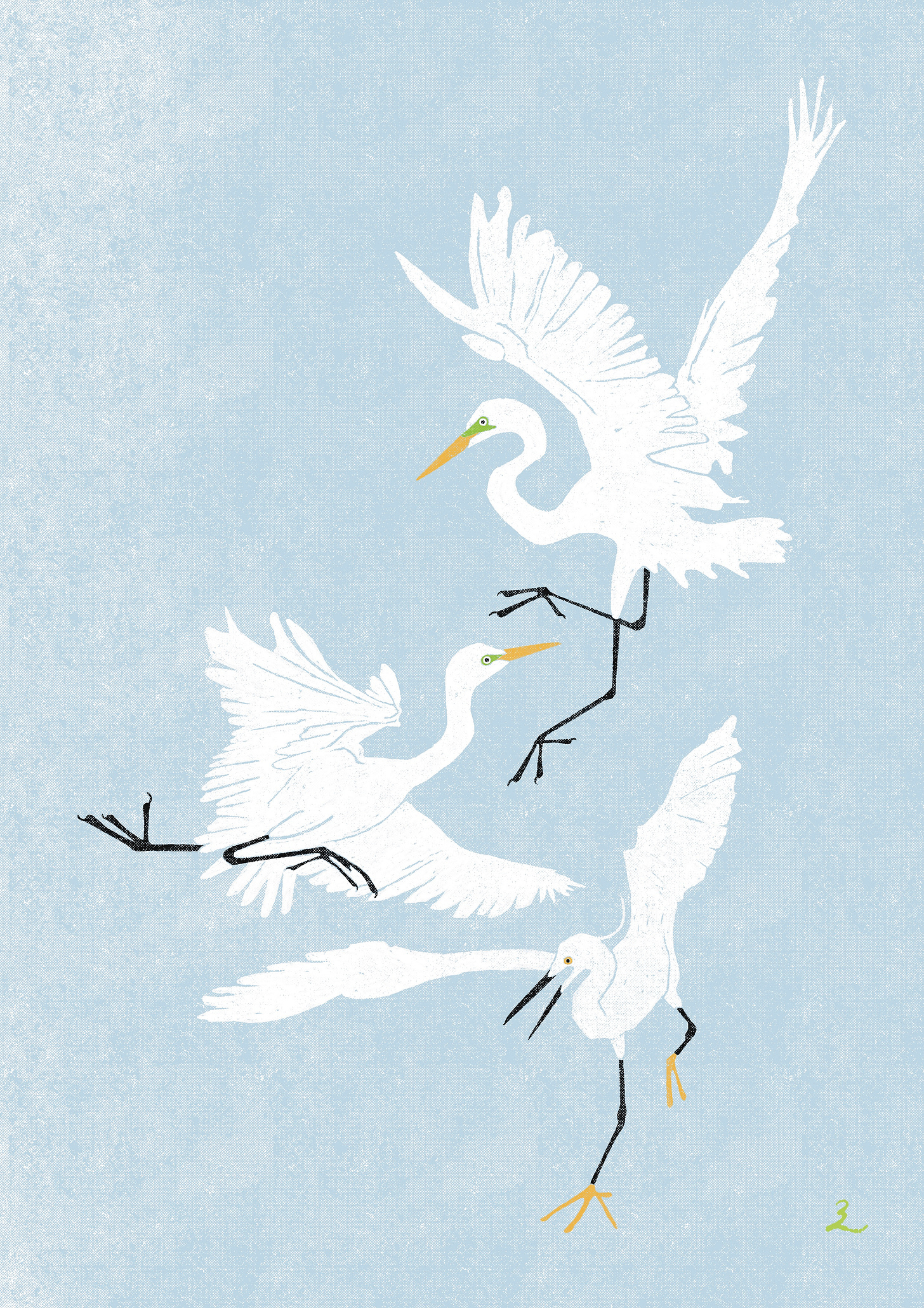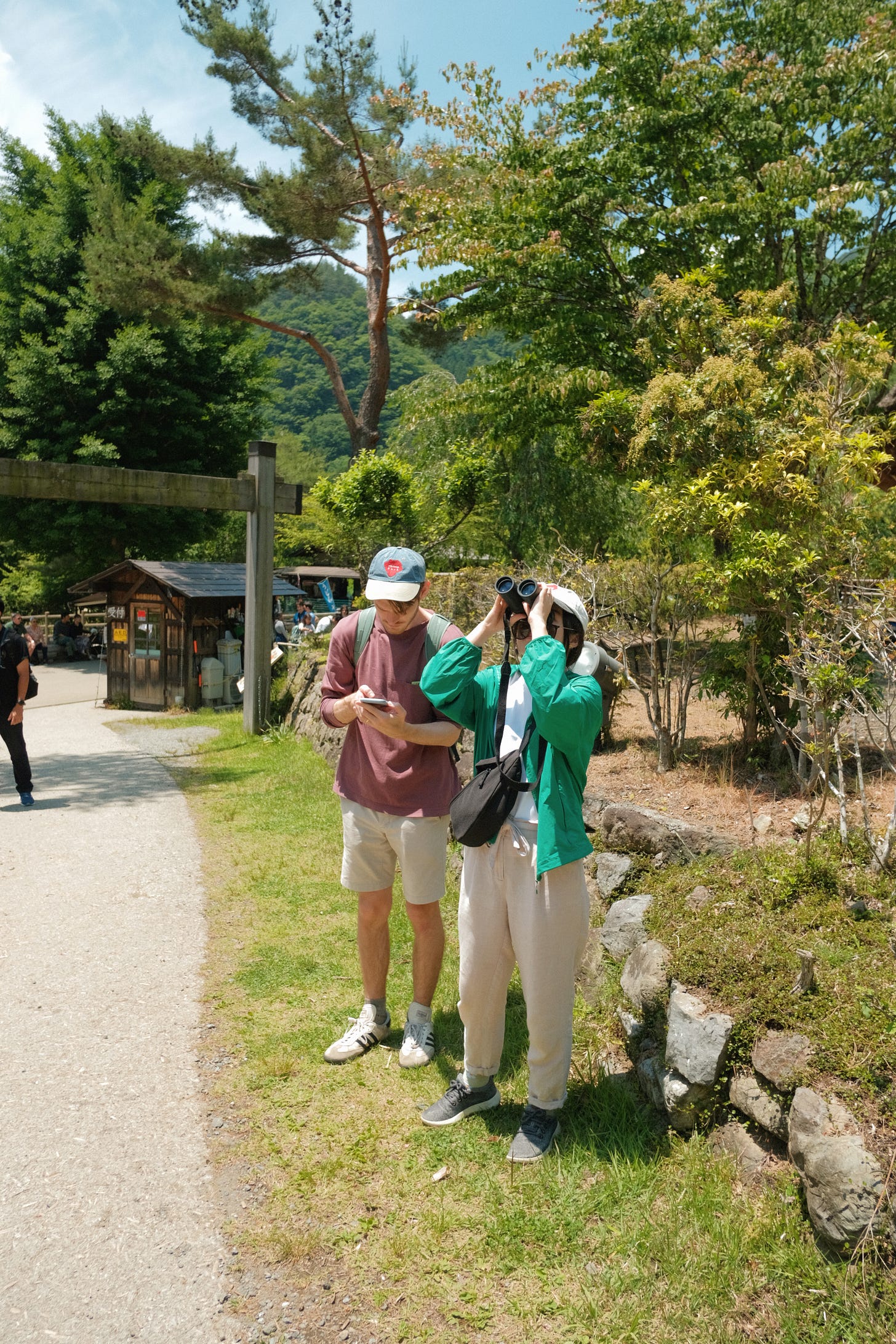All year long, these birds have graced our life in Japan with their elegant presence. On the very first day we started this birdwatching and drawing project last summer, we saw them in the rice fields by my childhood home. Now we live by a huge colony that I always pass by on my commute to and from work. I particularly love spotting their white silhouettes in the night sky, effortlessly soaring back to their nests as I also make my way home.
Names:
Great Egret | Ardea alba | ダイサギ (daisagi)
Medium Egret | Ardea intermedia | チュウサギ (chūsagi)
Little Egret | Egretta garzetta | コサギ (kosagi)
Size:
Great Egret: 80-104cms
Medium Egret: 56-72cms
Little Egret: 55-65cms
Range: Great Egrets live on every continent other than Antarctica. Medium Egrets can be found throughout southern Asia. Little Egrets are widespread in Europe, Africa, Oceania, and Asia.
Habitat: All egrets can be found in a variety of wetland habitats such as river and lake-sides, marshes, mudflats, and rice fields. They primarily nest in the tops of trees and form colonies with other birds.
Diet: Egrets primarily eat other animals such as fish, frogs, snakes, crabs, insects, and other aquatic creatures.
Culture: Twice a year, Sensō-ji Shrine in Tokyo hosts the Dance of the Egrets, a folk dance originating in Kyoto that has been passed down for over a thousand years to ward off epidemics. Watch the dance →
It has been a slow-paced, enriching adventure to get to know the birds in our neighborhood—to notice where they live, what they eat, and what trees they like to perch on. This week, our year-long project of birdwatching and drawing on Substack will come to an end. Our original goal had been to see 150+ birds between July 1, 2023, and June 30, 2024. A few months in, however, we realized this wasn’t realistic without leaving mainland Japan. Perhaps next year we’ll have a chance to travel to Hokkaido in the north or Okinawa in the south, but for now we’re happy to have seen 77 species in our limited range—most of which are fellow residents of the Tokyo Metropolitan Area. :)
We have no intention to stop birdwatching any time soon! Beginning in the fall, however, Drawing to See will shape-shift once again to reflect the growth and evolution of my creative practice. I’ll be taking off the next couple of months to let the seeds of new projects germinate as I rest, playfully experiment, and continue to explore themes of art, ecology, and community. Your support during this period of transition means everything to me, and I can’t wait to share the exciting new direction with you. Thank you for being a part of this journey!
For this post, we consulted Cornell Lab.
For paying subscribers, here is the last wallpaper of the month!
Keep reading with a 7-day free trial
Subscribe to Drawing to See to keep reading this post and get 7 days of free access to the full post archives.






